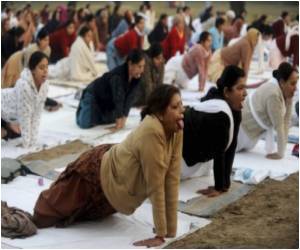
"I love Bombay and I love the city," said Nergish Sunawala, who works for Time Out Mumbai magazine. "I feel connected to it. All the confusion and so on, it just makes sense to me.
"I feel at home and I feel very safe here. I wouldn't live anywhere else."
Sunawala's attitude is a common one, although others readily admit that the problems of rapid urbanisation in India's "Maximum City" see them veer from love to hate and back again.
"I don't like my city," admitted Jerry Pinto, who co-edited the 2003 book "Bombay Meri Jaan" (My Dear Bombay), an anthology of writings on India's financial and entertainment capital.
"It's like a bad marriage. But I can't live anywhere else," the writer told AFP.
Advertisement
For Pinto, perspective matters when trying to work out why people come to Mumbai -- or any city. Too often, he says, observers fall into the trap of seeing a place as simply "good" or "bad".
Advertisement
"If you judge Mumbai by that standard, why, then, only a fool would come here."
But people do come to Mumbai -- and in their droves. For some it's out of economic necessity; for others it's to enjoy India's most cosmopolitan, culturally diverse city or for opportunities in a rapidly developing country.
Many still come to make it in Bollywood, the hugely-popular Hindi-language cinema industry, which is based in the city.
A vast mix of people, all trying to improve their lives, makes Mumbai a one-off among Indian cities, said Sita Wadhwani, the city editor of the travel web site CNNGo.com.
"It's unique in India. It's a lot more relaxed. There's a sense of getting on with things here," she said.
"I personally feel that it's really a city where you can be yourself. In other places in India, you feel that cultural pressure, especially as a woman.
"Men and women are just busy becoming something of themselves. That's really the draw. You can come here without the pressure of family, society or caste."
Unlike New Delhi, where crime against women is a growing problem, the relative safety of Mumbai is liberating, said Wadhwani, who was educated in the capital, Germany and Canada.
"Safety and ease of movement equals freedom," she added.
Increasingly, Mumbai is home to foreign nationals, many of them drawn to the possibilities of modern India.
"From a business perspective, it's the promised land," said Briton Danny Carroll, who came to India 16 years ago from west London and never left.
"In our working lifetime, I don't think we are going to find an economy that's going to grow or has as many great things happening to it as India."
In-your-face Mumbai can be a shock to the system for some foreigners, particularly those used to a more structured way of life, said Carroll, who works for an Australian business consultancy firm.
"But if you like that sense of freedom bordering on anarchy, and the ability to be creative and do things differently, it's a fun challenge. You'll love it," he added.
Time Out Mumbai's Sunawala says that confusion is just part of life in the city: she spent two years studying in upstate New York and admitted she didn't "get" the more ordered, quieter life of small town America.
Lalji Tabiyad is typical of the millions of internal migrants who come to Mumbai each year, most of them from India's rural heartland, and end up working in the vast unregulated sector, driving taxis or as housemaids.
He left the family farm in the north Indian state of Rajasthan at the age of 17. Twenty years on, he's still in Mumbai, selling sweet tea to office workers.
He earns anything from 2,000 rupees ($44) to 7,000 rupees a month and sends home what he can to support his family.
"I came to the city to find work and earn money," said the "chaiwallah", who is married with four daughters. "I could make more here than back home. It's a city of opportunity.
"At some point I'll go back -- once I've made some more money."
Mumbai, said Pinto, is a better option for a poor rural migrant than any other Indian city.
"Come to Mumbai and you'll find something to do, you'll find someone who speaks your language, you'll find a way to make some money to send home," he said.
"As for the poor infrastructure and all the other things that make middle-class living hell, the poor in India don't notice because they've left behind a situation that is far worse."
Source-AFP









